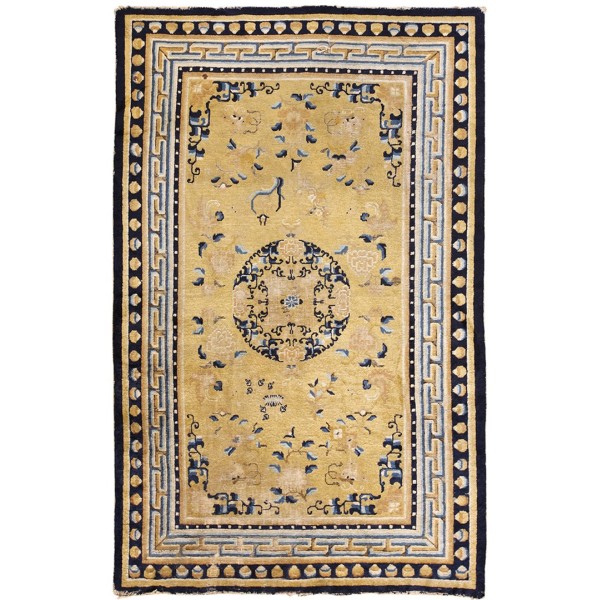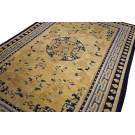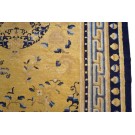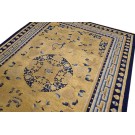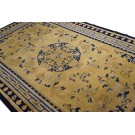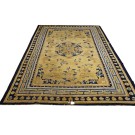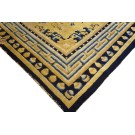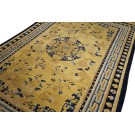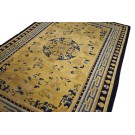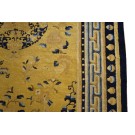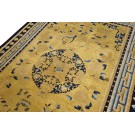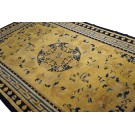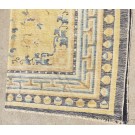Mid-18th Century W. Chinese Ningxia Carpet
| Stock ID: | #23698 |
| General Rug Type: | Chinese |
| Specific Rug Type: | Chinese - Ningxia |
| Circa: | 1750 |
| Ground Color: | Yellow |
| Border Color: | Navy |
| Origin: | China |
| Material: | Wool |
| Weave: | Pile - Knotted |
| Shape: | Rectangle |
| Width: | 5' 4" ( 163 cm ) |
| Length: | 8' 6" ( 259 cm ) |
DescriptionChineseCarpets made in China proper. See entries Ningshia, Peking, Art Deco. Chinese - NingxiaThe western Chinese province of Ningshia has a mostly Muslim population and is the source of many of the oldest Chinese carpets of the modern (Ming Dynasty and later) era. The designs are typically Chinese: fretwork or Greek key boarders, pacony palmettes, bats, butterflies, Fu dogs, clouds, dragons, shou symbols, etc. Pollar carpets designed to wrap around monastery columns and displaying a dragon above waves are a specialty. The weave is coarse and soft, with several wefts between knot rows and a longish pile. Yellow golds, dark and light blues are common colors. The outer most plain border on pre 1800 examples is a corrosive brown. Formats include: large square throne carpets, paralleled meditation runners, chair seats and scalloped backs. | |
| Tearsheet Download | |
